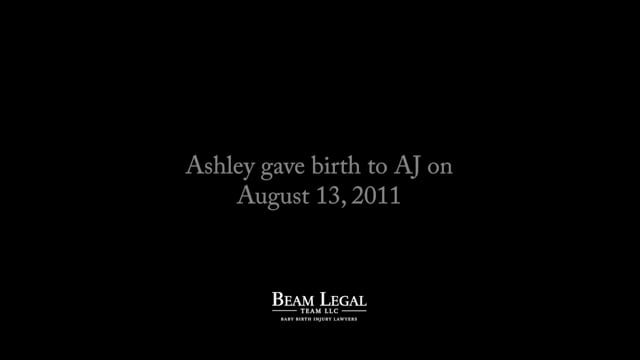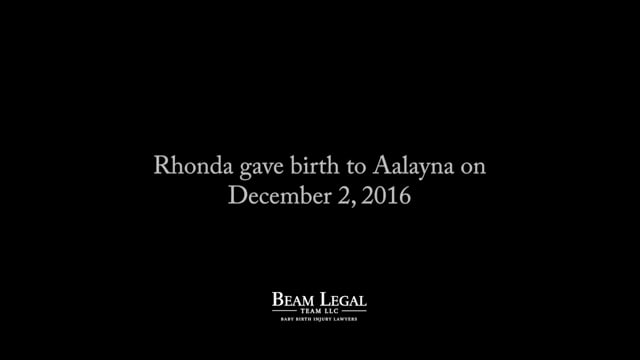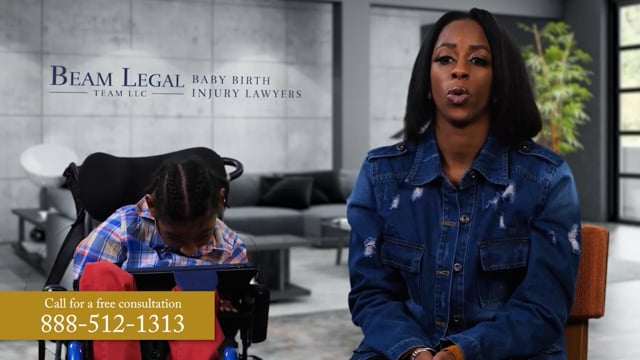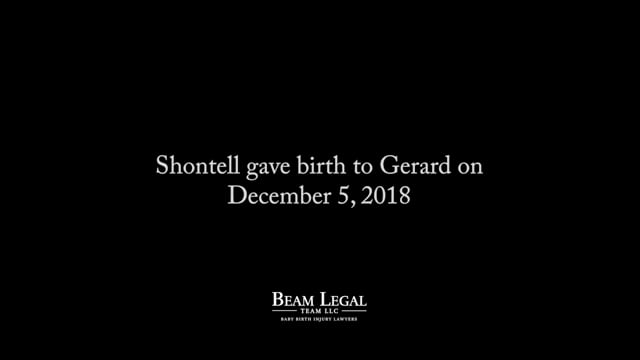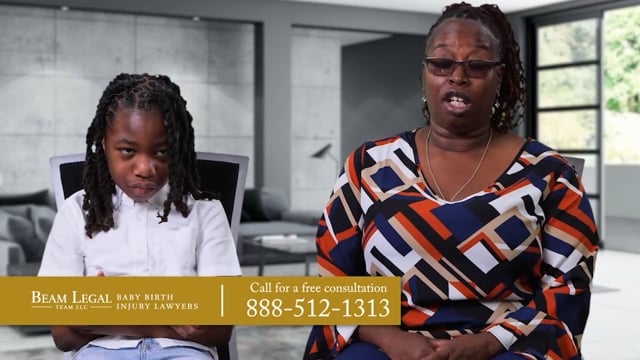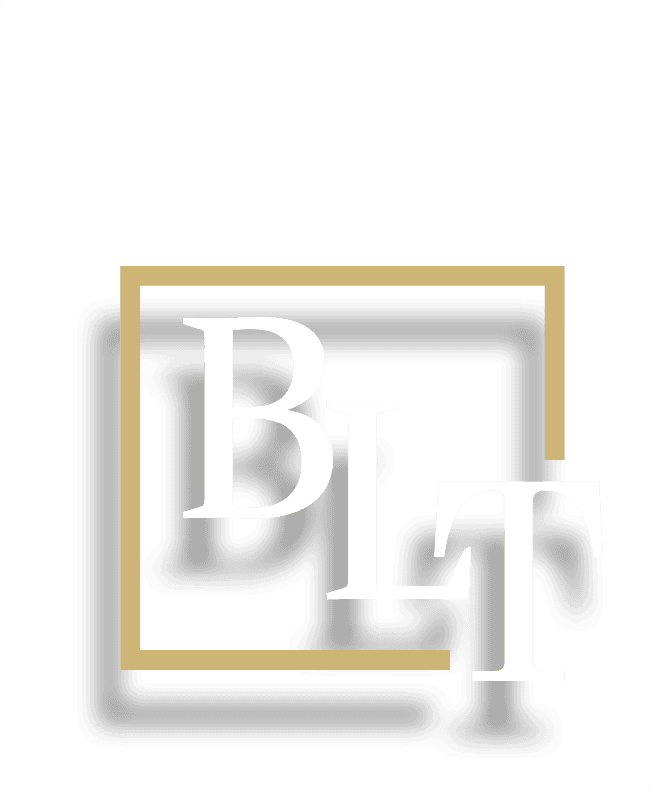Detecting a Birth Injury
Holding Negligent Medical Professionals Accountable
The detection of a preventable birth injury is not always easy. Certainly, as a parent, you may have observed something is wrong. Your baby may not react like other babies; he or she may have muscle tone that is loose or floppy or your child may exhibit a lack of coordination. Certainly, detecting a birth injury should not be done by a parent on their own. If you as a parent have reason to believe that your child is the victim of a birth injury, it is important to speak with an experienced physician who can properly diagnose the child.
There may be bruising or other indicators that cause you to suspect something is not right. If you have observed any abnormalities, and you still have questions despite your doctor’s explanation, speak with a birth injury lawyer at Beam Legal Team immediately.
Our Chicago attorney team proudly offers free consultations to clients nationwide: Call (866) 404-5221.
What are the Indicators of Birth Injuries?
- Seizures
- Coma
- Poor coordination
- Bruising and / or excessive molding of your child’s head or scalp
- Extreme lethargy
- Extended stay in the neonatal intensive care unit (NICU)
- Skin discoloration
- Intellectual Disability
- Cerebral palsy
- Diagnosis of hypoxic-ischemic injury or neonatal encephalopathy
This is by no means a complete list of all the indicators of a birth injury. Following delivery, a mother can also have indicators of a possible birth injury. You should discuss the indicators that you have observed and what you have been told by your doctor with our professionals. Our team of Chicago lawyers has represented children throughout the nation. We are located in Chicago, IL, and have more than 30 years of experience in recognizing the indicators of a preventable birth injury.
Symptoms that Can Appear as Actions
In many situations, there are actions that the baby or child may exhibit that could indicate a birth injury is present. Some may be similar to other health conditions, so it’s important to have your baby monitored and checked carefully to determine if something else is wrong.
Some of the most common actions that may be displayed as a result of a birth injury include, but are not limited to the following:
- Multiple seizures
- Sensitivity to light
- Nausea, including vomiting
- Trouble with breathing or being out of breath easily
- Arching of the back while crying
In some situations, the baby may have excessive amounts of drool or they may be fussy for no reason. They may also experience trouble when eating or swallowing. While these may be indicators of general health issues, there could be underlying issues that you want to have a medical professional check out.
Impact On the Baby’s Overall Health
There are some signs and symptoms that may not be displayed nearly as much as actions, but if they exist, they can be a sign of something gone wrong. In some situations, the baby may exhibit both health problems and actions that may indicate a birth injury.
Some of the health-related symptoms the baby may experience include hyper or hypotension, dizziness, low heart rate, and low oxygen levels in the bloodstream. The baby may also have a serious wheeze in their breathing, or they could have trouble gaining weight.
Other health issues exist, such as change in skin color ranging from paleness to jaundice. If you see any of these issues, or other health problems such as anemia, fever, or an inflamed nasal passage, take your baby to the doctor to get a proper diagnosis.
Physical Signs of Damage
The physical damages you identify will most likely be the clearest indicators that your baby has suffered some sort of birth injury. The physical damages may involve the muscles and bones in various parts of the body indicating that there was some sort of trauma or issue during the pregnancy or delivery.
Recognizing the physical symptoms can be very important as they may help in showing that someone was in fact negligent in the birth of your child. While health and actionable issues may be chalked up to illnesses or other conditions, physical problems are most often caused by negligence.
For instance, you may have a baby whose arm or hand is bent in towards the body or his or her hand curls up in a claw-like position. These are indicators of various conditions stemming from a birth injury. Similarly, you may notice your baby experiencing muscle stiffness or their muscles are loose. These are other signs of a physical injury.
SOME OTHER PHYSICAL SYMPTOMS TO LOOK OUT FOR CAN INCLUDE:
- Skull fractures
- Muscle spasms
- Weakness in limbs
- Poor reflexes
- Stronger use of one side of the body
What to Look for Between 1 and 2 Years Old
Not all indicators are easily apparent and for some babies, it may take longer for symptoms to manifest. In some cases, problems may not display until the baby is one or even two years old. These ages are around the time the following symptoms may appear:
- Loss of bodily movement
- Difficulty with independent actions—eating with a spoon, potty training, etc.
- Lack of problem-solving abilities
- Memory issues
- Severe tantrums and fits
- Difficulty controlling muscles
- Speech issues
- Trouble walking
Other issues that may occur during this time can include trouble connecting actions to consequences and coordination issues. It’s important for you to recognize the milestones your child should reach to indicate their development at various ages. This can also help you identify the presence of a birth injury.
Beam Legal Team: Fighting for Justice from Coast to Coast
When a preventable birth injury has occurred, we may ask to review your child’s medical records with expert physicians, to determine if there are sufficient grounds to file a claim. Our legal skills have resulted in over one billion dollars in verdicts and settlements for the children we represent across the country.
The future of your child deserves a call to Beam Legal Team.
What Developmental Milestones Should My Child Reach?
Developmental milestones are not always perfect indicators as some children may just be slower to hit the milestone than others. These are not foolproof and are typically indicated with average ages. However, missing the milestone by a great deal of time could indicate something is wrong with your child.

Development Milestones at 2 to 4 Months Old
- Your baby turns his or her head in response to sounds
- Your baby is able to coo or smile
- Your baby is able to follow people with his or her eyes and can now recognize faces
- Your baby is able to hold his or her head up on their own
- Your baby reaches for objects and can properly grasp them
- Your baby can push up on his or her elbows when lying down on their stomach
Development Milestones at 6 to 9 Months Old
- Your baby can bring objects to his or her mouth accurately
- Your baby looks at objects with ease
- Your baby can roll over from stomach to back and from back to stomach
- Your baby can move items from one hand to the other
- Your baby can pick up smaller objects with his or her fingers
- Your baby has started crawling
- Your baby recognizes different types of sounds and different words
- Your baby can sit on his or her own without having help
- Your baby can bounce when standing but still requires assistance
Development Milestones at 1 Year Old
- Your child has started exploring and is capable of finding hidden objects
- Your child can either walk on his or her own, or with assistance by holding onto objects or furniture
- Your child understands and follows various instructions
- Your child is starting to say more words
Development Milestones at 18 Months Old
- Your child is able to scribble on paper on their own
- Your child can now stand and walk
- Your child no longer needs help eating with a spoon
- Your child can drink from a cup without help
- Your child can understand more instructions
- Your child can point to indicate items they want
- Your child can say more single words
Development Milestones at 2 to 3 Years Old
- Your baby recognizes body parts and members of your family
- Your child can now dress and undress without help
- Your child draws straight lines and circles
- Your child can run and has the coordination to kick a ball
- Your child can say his or her own name and age
- Your child goes up and down the stairs without help
Development Milestones at 4 to 5 Years Old
- Your child can now work and play with other children cooperatively
- Your child is able to understand basic grammar and remember songs
- Your child should be able to use the toilet without any help
- Your child doesn’t need help climbing
- Your child can jump or stand on one foot for a short amount of time
If you recognize any issues with your child’s development, physical stature, or overall health, it may be an indicator of a birth injury. If someone’s negligence was the cause, our Chicago birth injury attorneys at Beam Legal Team are here for you to protect your rights.
You can hold the negligent party accountable for their actions and seek compensation to cover long-term medical expenses, physical and occupational therapy, and any care that may have resulted from the injuries.


